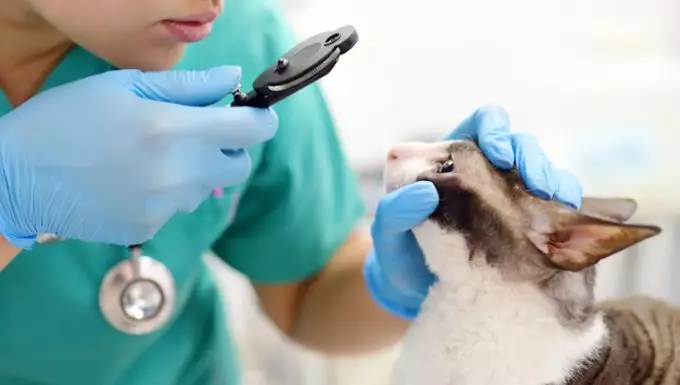Cats are beloved companions, bringing joy and comfort to many households. However, like all living beings, they can encounter health issues that may affect their well-being. One such concern is excess blood cells in the eye, a condition that can significantly impact a cat’s vision. Understanding this condition involves grasping the underlying causes, recognizing the symptoms, and exploring treatment options.
Excess blood cells in the eye, although often alarming for pet owners, can stem from various medical problems. Clinically, this condition is primarily categorized into two distinct forms: hypopyon and lipid flare. Hypopyon refers to the presence of white blood cells in the anterior chamber of the eye, generally indicating underlying inflammation. Meanwhile, lipid flare involves an unusual accumulation of lipids, often due to elevated fat levels in the bloodstream. It’s crucial for cat owners to differentiate these terms, as they reflect diverse pathological processes.
This condition should not be confused with hyphema, which denotes the presence of blood in the eye’s anterior chamber and is a separate entity altogether. Early recognition of excess blood cells in a cat’s eye can be vital for preserving vision and ensuring prompt medical intervention.
Veterinarians emphasize the importance of symptoms as identifiers of underlying health issues. The signs that excess blood cells are building up in a cat’s eye can vary widely, and being attuned to these changes can make a significant difference in treatment outcomes. Common symptoms to watch for include:
– **Swelling of the cornea and iris**
– **Cloudy appearance in the eyes**
– **Increased tearing**
– **Notable discomfort, reflected in behaviors like twitching or pawing at the eyes**
– **Bloodshot appearance**
– **Potential development of lesions**
– **Vision impairment and changes, such as bumping into objects or hesitance to navigate environments**
Monitor your cat for any combination of these symptoms, as early signs may help in the diagnosis and treatment process.
The underlying causes of excess blood cells in the eye are varied and may indicate serious health concerns. Some prevalent conditions linked to this issue include:
– **Uveitis:** Inflammation of the uveal tract, often leading to discomfort and possible vision loss.
– **Hyperlipidemia:** Elevated lipid levels in the blood that can lead to lipid flare.
– **Tumors:** Both benign and malignant growths can pressure the eye and contribute to abnormal blood cell levels.
– **Infectious diseases:** Conditions such as toxoplasmosis and feline leukemia virus (FeLV) can affect overall health and, by extension, ocular health.
– **Viral and bacterial infections:** These can incite inflammation or directly damage the eye.
– **Systemic issues:** Conditions like hypertension and feline immunodeficiency virus (FIV) can also manifest through eye symptoms.
Given the range of potential underlying causes, a thorough diagnosis from a veterinarian is imperative for effective treatment.
When you suspect your cat might be suffering from excess blood cells in the eye, prompt veterinary attention is essential. A veterinarian will start with a comprehensive examination that includes:
1. **Detailed medical history gathering:** Understanding your cat’s health background and any recent changes will provide context to the current symptoms.
2. **Physical and ocular examination:** This will serve as an initial assessment to identify visible signs of distress.
3. **Diagnostic testing:** Blood and urine tests, along with analysis of any ocular fluids, may be crucial in determining the cause of the symptoms.
Based on the findings, your veterinarian will be able to formulate an appropriate treatment plan tailored to the specific underlying cause of the condition.
The treatment strategy will depend heavily on the diagnosed cause behind the elevated blood cells. Nutrition can play a significant role, particularly in cases related to hyperlipidemia. A diet reduction in fat and calories is often advocated.
In instances of inflammation, anti-inflammatory medications may be prescribed to alleviate symptoms and support the healing process. Always ensure adherence to dosage instructions and complete the prescribed treatment course.
Long-term management often requires regular veterinary visits to monitor the condition effectively and adjust treatment as necessary. Collaboration with your veterinarian will be essential in developing a routine that best suits your cat’s needs.
Excess blood cells in a cat’s eye can be a troubling condition, one that necessitates immediate attention and thorough understanding. By recognizing symptoms, identifying potential causes, and engaging with veterinary professionals for diagnosis and treatment, cat owners can help maintain their pets’ ocular health. Ensuring proactive and informed care is vital in preserving the quality of life of our feline friends.


Leave a Reply